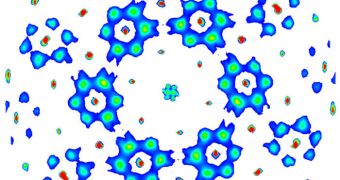In a paper presented in the May 4 issue of the top journal Science, an international collaboration of researchers presents a substance that exists in a quantum mechanical state never achieved before. The stuff is known as a spin-orbital liquid.
The research team, which also includes experts from the US National Institute of Standards and Technology (NIST), was partially supported in its study by the National Science Foundation (NSF).
Experts in the international physics community have been trying to obtain a spin-orbital liquid for years, but this was the first study to successfully obtain the substance. At this point, no clear applications for the material were presented by researchers.
According to physicists the quantum effects that give birth to this material also underlie properties such as superconductivity and superfluidity. The former allows electricity to experience no resistance while traveling through a material, while the latter allows liquid to experience no friction while flowing.
NIST experts say that the term spin liquid may be somewhat misleading for laypeople, since the substance is actually more closely related to a solid material. The differences occur at the molecular level, where copper, oxygen, barium and antimony atoms form a crystalline lattice structure.
The most interesting aspect of the material is that this type of inner structure allows the copper atoms to display a series of properties that are conventionally associated with liquids – for example, the fact that the atoms' magnetic orientation remains in a constant state of flux.
“You'd generally expect the copper spins and the corresponding electronic orbitals to become locked into a specific pattern upon cooling, but in this case that doesn't happen,” expert Collin Broholm says.
“While the crystalline lattice is solid, the atomic spins continue to fluctuate. These spin fluctuations embody a fluid aspect of the material, so we end up with a quantum fluid within a solid,” he explains.
Broholm holds joint appointments as a physicist, at the NIST Center for Neutron Research (NCNR) and the Johns Hopkins University (JHU) Institute for Quantum Matter. He was also a member of the international team of experts that conducted the new research.
“Here we have a new type of magnetism, characterized by the lack of static orbital and spin order at low temperatures. Instead what we see is orbital and spin quantum fluctuations,” Broholm says.
“This could provide new opportunities in materials science and engineering down the road, but for now we're excited to have encountered a qualitatively new state of magnetism where spin and orbital quantum fluctuations prevail,” he adds.
Scientists from the University of Tokyo, University of Nagoya, Osaka University and University of California in Santa Cruz were also part of the research effort.

 14 DAY TRIAL //
14 DAY TRIAL //